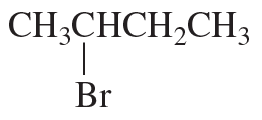Two elimination products are obtained from the following E2 reaction:
a. What are the elimination products?
b. Which is formed in greater yield?

 Verified step by step guidance
Verified step by step guidance Verified video answer for a similar problem:
Verified video answer for a similar problem:



 1:18m
1:18mMaster Defining Zaitsev’s Rule with a bite sized video explanation from Johnny
Start learning